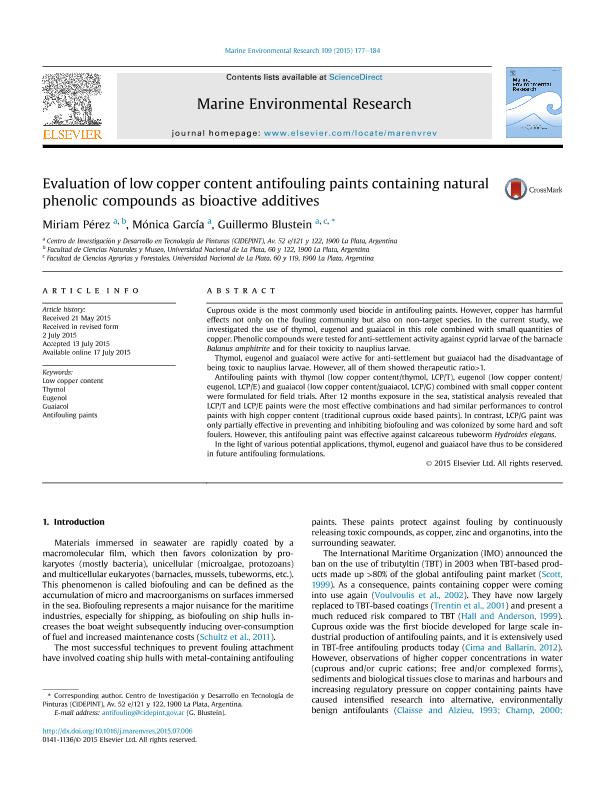Artículo
Evaluation of low copper content antifouling paints containing natural phenolic compounds as bioactive additives
Fecha de publicación:
08/2015
Editorial:
Elsevier
Revista:
Marine Environmental Research
ISSN:
0141-1136
Idioma:
Inglés
Tipo de recurso:
Artículo publicado
Clasificación temática:
Resumen
Cuprous oxide is the most commonly used biocide in antifouling paints. However, copper has harmful effects not only on the fouling community but also on non-target species. In the current study, we investigated the use of thymol, eugenol and guaiacol in this role combined with small quantities of copper. Phenolic compounds were tested for anti-settlement activity against cyprid larvae of the barnacle Balanus amphitrite and for their toxicity to nauplius larvae. Thymol, eugenol and guaiacol were active for anti-settlement but guaiacol had the disadvantage of being toxic to nauplius larvae. However, all of them showed therapeutic ratio>1. Antifouling paints with thymol (low copper content/thymol, LCP/T), eugenol (low copper content/ eugenol, LCP/E) and guaiacol (low copper content/guaiacol, LCP/G) combined with small copper content were formulated for field trials. After 12 months exposure in the sea, statistical analysis revealed that LCP/T and LCP/E paints were the most effective combinations and had similar performances to control paints with high copper content (traditional cuprous oxide based paints). In contrast, LCP/G paint was only partially effective in preventing and inhibiting biofouling and was colonized by some hard and soft foulers. However, this antifouling paint was effective against calcareous tubeworm Hydroides elegans. In the light of various potential applications, thymol, eugenol and guaiacol have thus to be considered in future antifouling formulations.
Palabras clave:
Thymol
,
Eugenol
,
Guaiacol
,
Antifouling Paints
,
Low Copper Content
Archivos asociados
Licencia
Identificadores
Colecciones
Articulos(CIDEPINT)
Articulos de CENTRO DE INV EN TECNOLOGIA DE PINTURAS (I)
Articulos de CENTRO DE INV EN TECNOLOGIA DE PINTURAS (I)
Citación
Perez, Miriam Cristina; García, Mónica; Blustein, Guillermo; Evaluation of low copper content antifouling paints containing natural phenolic compounds as bioactive additives; Elsevier; Marine Environmental Research; 109; 8-2015; 177-184
Compartir
Altmétricas




